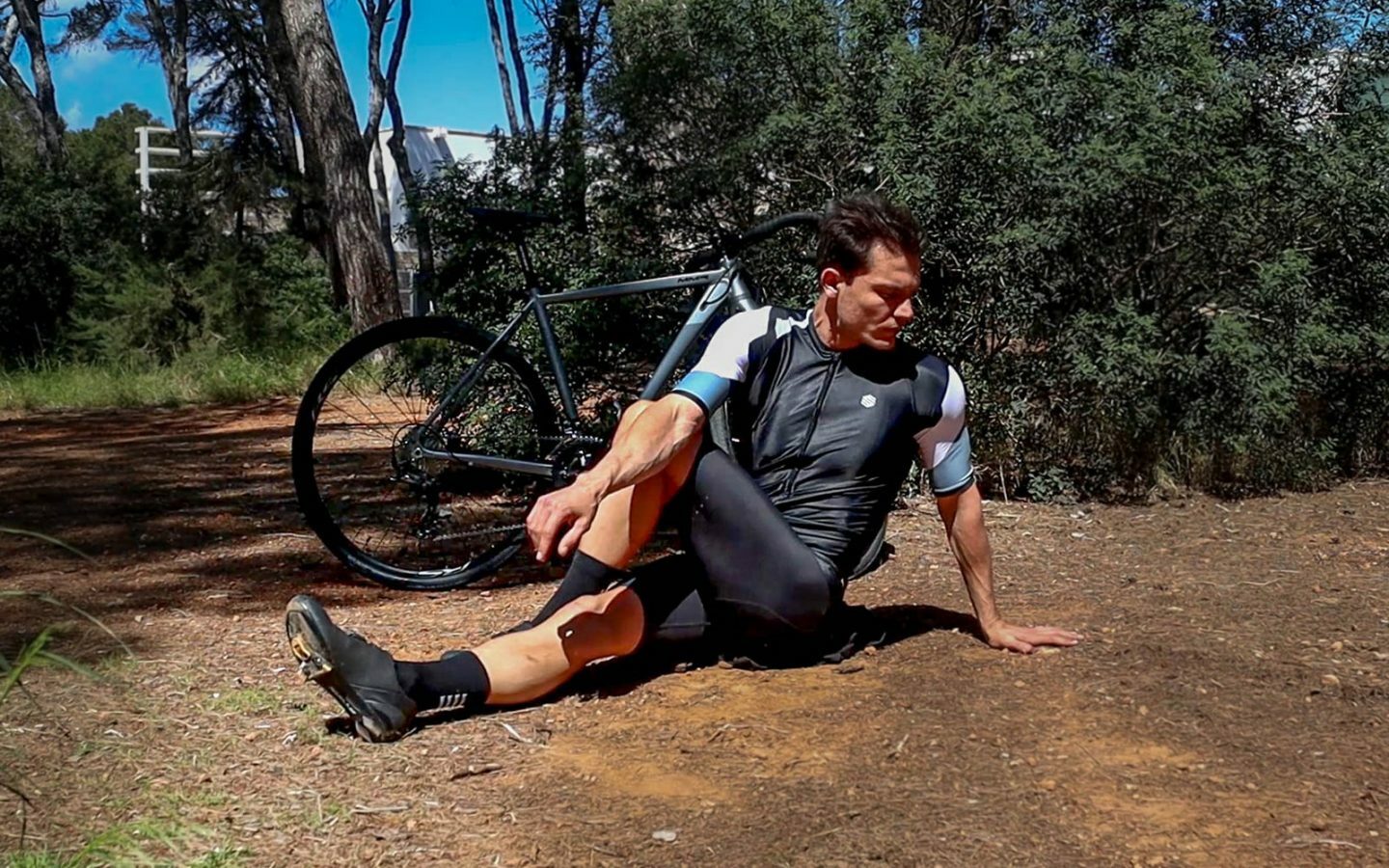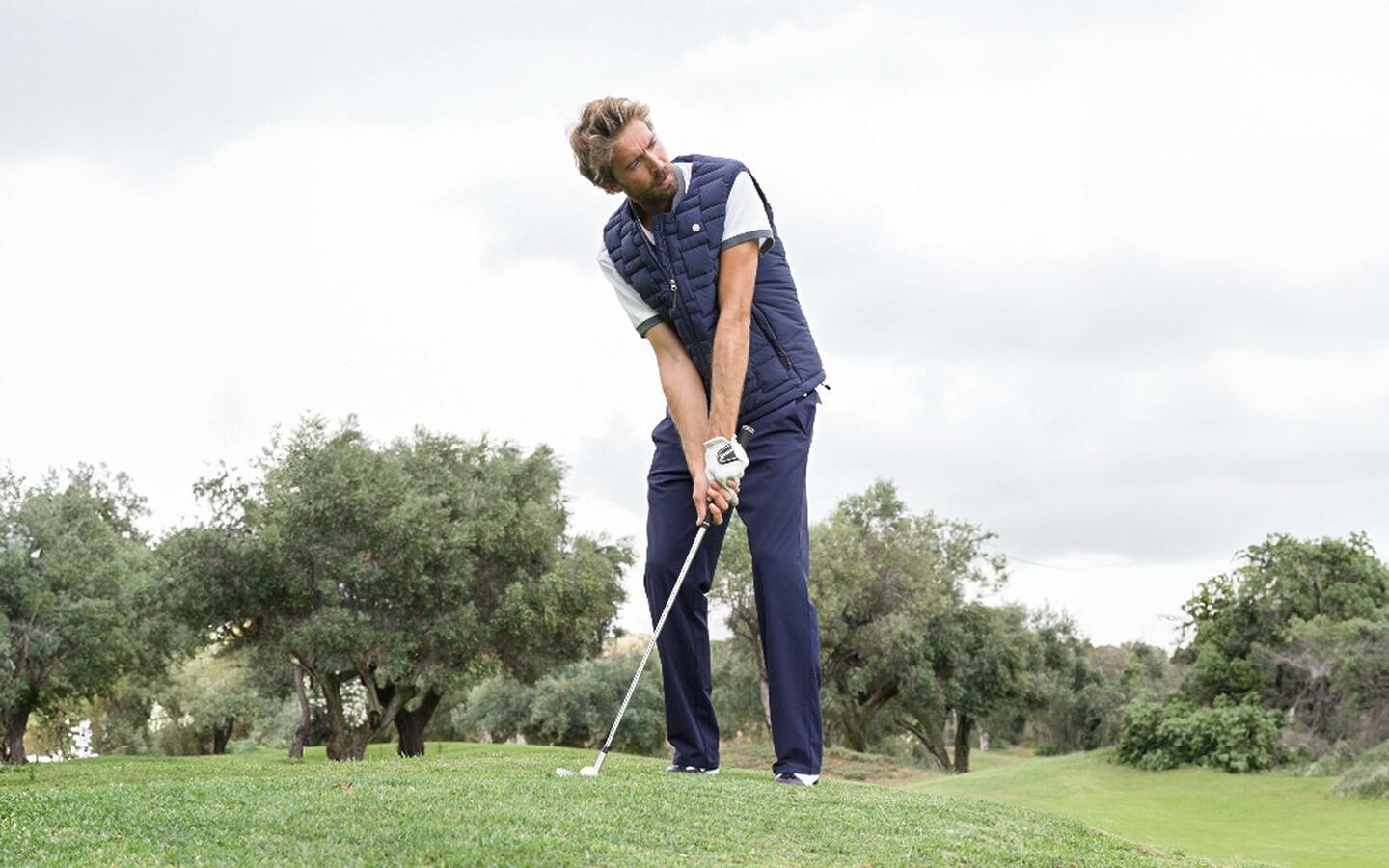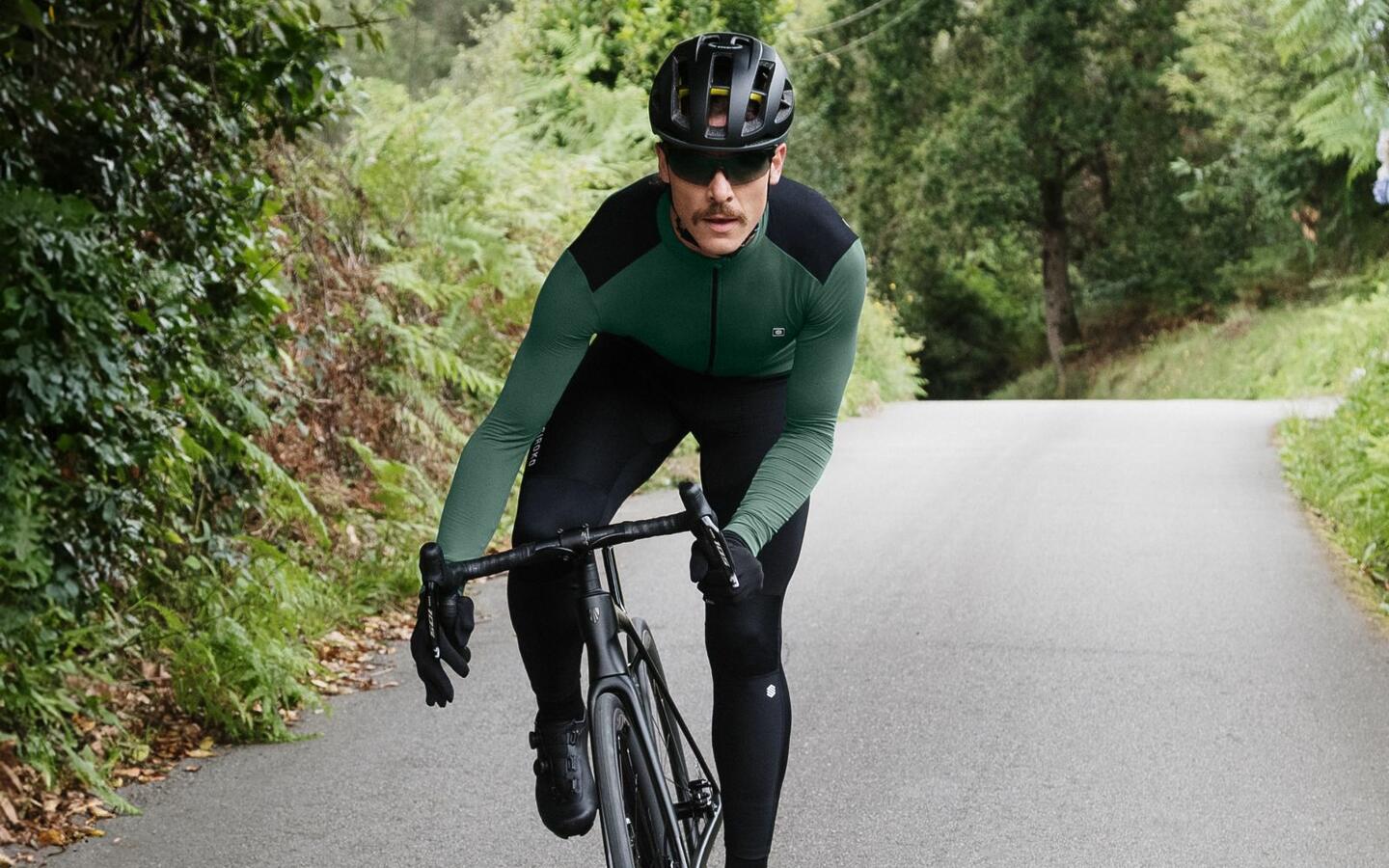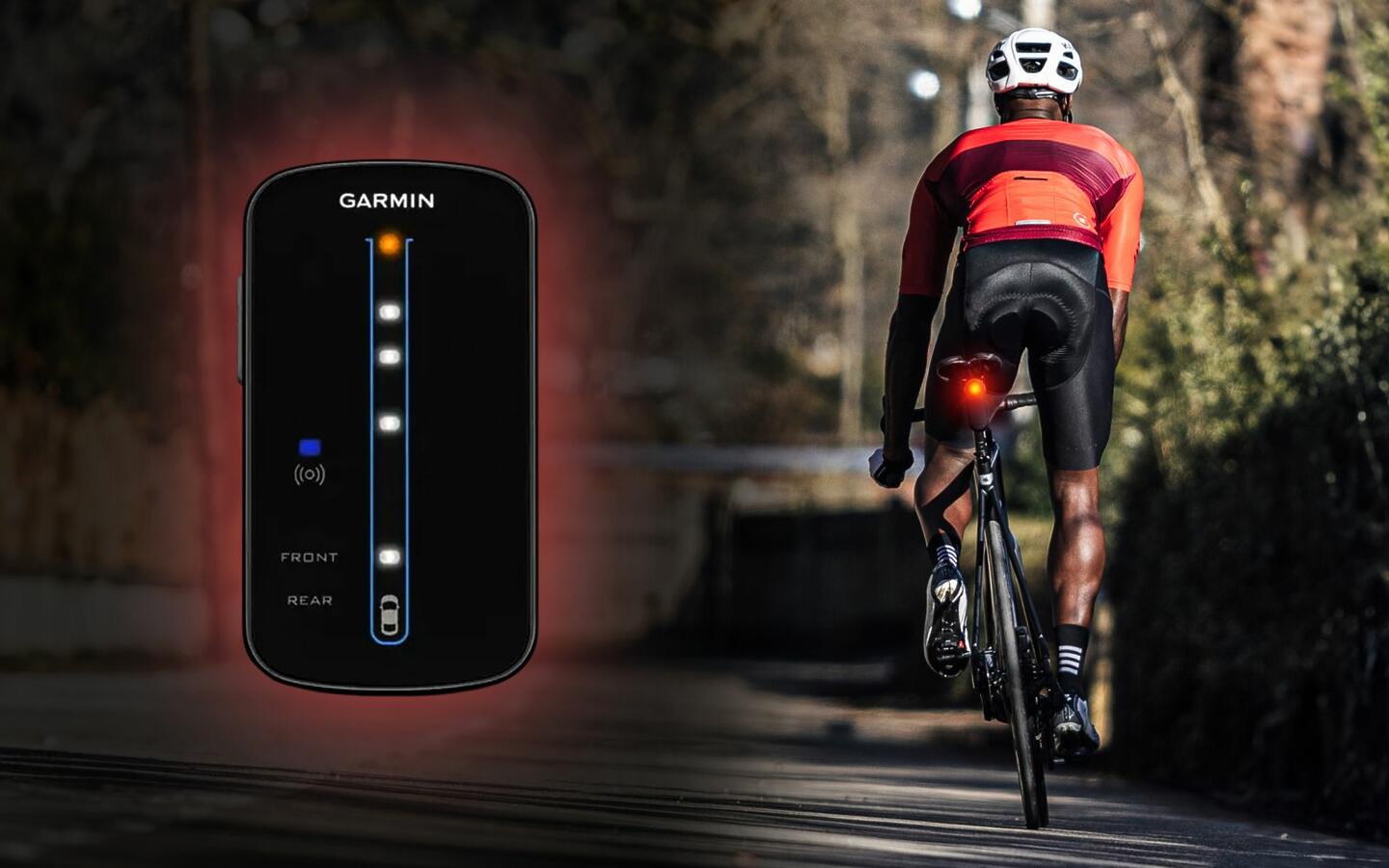Stretching is a great way for cyclists to avoid injury, improve flexibility and tell the body that it’s time to rest after pedaling. Bear in mind that the following 10 basic stretches are to be done once you get off the bike. Stretching before is not recommended. If you want to warm up, use your indoor bike trainer or start off with a gentle ride to prepare the muscles.
Below you will find detailed instructions on how to do each exercise and learn which muscles to stretch and why.
The three key points for these exercises are as follows:
- Stretch for 20-30 seconds in each position or per each limb.
- No bouncing. The movement should be smooth and progressive.
- Reach a comfortable position, with no pain or very mild pain.
Neck stretch
The position on the bike makes the neck extensor muscles contracted. This exercise relaxes the tension of these muscles as well as the upper part of the trapezius, which also gets heavily loaded when we’re cycling.
In this exercise you should keep your back upright, interlace your hands behind your head and gently pull your head down. Lower your chin to reach the point where the front of your neck meets the beginning of your chest.
Triceps and shoulder stretch
Now, let’s stretch the shoulder area and the triceps brachii, an arm muscle that is tensed up on both road and mountain bikes.
Imagine that your back itches between your shoulder blades. Bring your right hand above your head to scratch it. Then grab your right elbow with your other hand and push down behind your head without squeezing too hard. Repeat with the other arm.
Forearm stretch
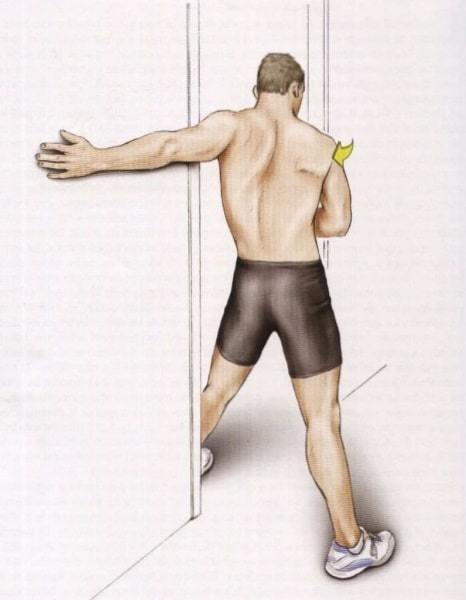
Keep standing, this time in a doorway. Press your outstretched arm against the wall at shoulder height with the thumb facing upwards. Turn the torso backwards and you will notice how all the muscles of the forearm stretch. Repeat with the other arm.
Mountain bikers feel the strain on their forearms when holding the handlebars, braking, shifting gears, switching lockout suspension on and off… Although not every day is the Paris-Roubaix race, the forearm is equally stressed on the road.
Finger stretches
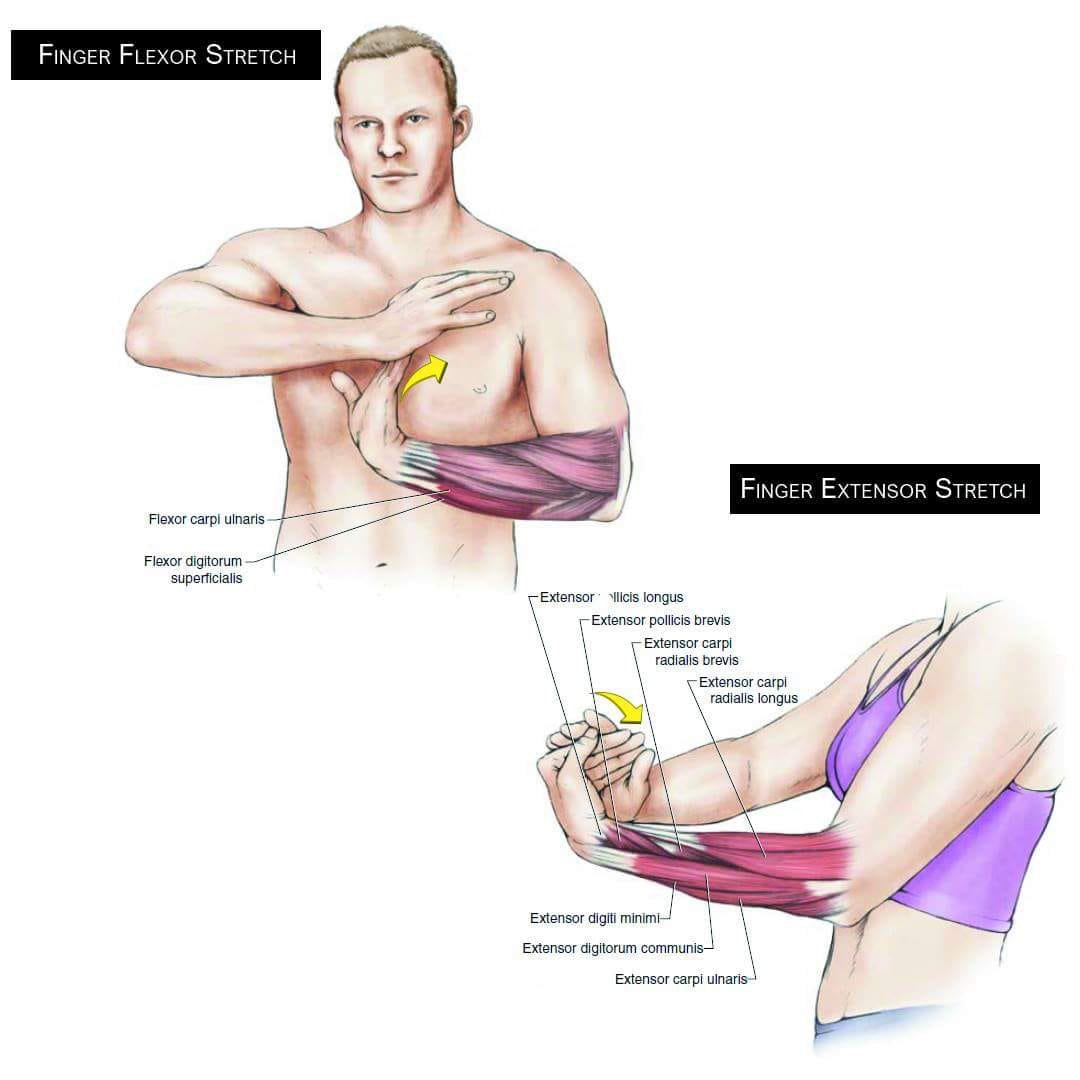
We are going to do two types of stretches. The first one for the flexor muscles and the second one for the extensor muscles. These stretches help us to relax our fingers after several hours of gripping and squeezing the handlebars.
To stretch the flexors, place your hands in the middle of your chest as if you were making the “namaste” gesture. Raise your right hand until the palm touches the fingertips of the left hand. Now push the left hand fingers towards the elbow of the left arm. Repeat with your other hand.
To stretch the extensors, press your arm against your body and bend your elbow 90 degrees. Hold your hand straight with your palm open as if you were asking for something. Bend the wrist 90 degrees and point the fingers toward the inside of the elbow. With the other hand press towards the forearm.
Quad stretch
The stretch that everyone does before or after a workout, and the one that is most often done wrong. By no means should you pull your foot as if you wanted to quickly take off your cycling shoes. Do it smoothly, pushing forward with your hips. If you find it hard to keep your balance, lean against a wall, a street post, a tree or any other stable object. Be careful when doing it on the bike because if you can’t keep your balance you risk falling off the bike while you’re not even moving.
The quadriceps is the largest muscle in the entire body and is involved in most of our fundamental movements. In cycling it is the source of a large portion of our strength, along with the gluteus and calf muscles. Therefore we must know how to treat it and take good care of it by stretching it properly.
Dorsal area and lower back (lumbar area) stretches
Remain standing, with legs slightly apart, bending your chest forward with your arms outstretched until you place them on a table or on the top tube of the bike. Your body should form a 90 degree angle. To stretch, lower the entire dorsal and lumbar area by pressing the torso downward.
This type of stretch is highly beneficial for cyclists, as the lower back and dorsal areas are the ones that cause a lot of problems, pain and discomfort. The reasons may vary: from an incorrect position on the bike to pulling the lower back muscles too much when cycling.
Squat stretch
Let’s squat down to the floor with our heels apart and knees pointing outwards. If you find it difficult to keep your balance, lean your back or hands against a wall. Your buttocks should be almost touching the floor. Keep your eyes straight ahead and your back as upright as possible.
This position stretches muscles such as the soleus, quadriceps, hip flexors, gluteus and hamstrings, as well as the Achilles tendon and the knee and hip tendons.
Adductor stretch
Sit on the floor with your back straight. Bring the soles of your feet together, hold them with your hands and gently bend down while keeping your back straight. You will notice your groin muscles tighten up. Make sure to do it in a “no pain” mode because we’re not Simone Biles or Jean-Claude Van Damme to just spread our legs as if it were a walk in the park.
The adductors help the hip flexion and extension and they are not the most important muscles in cycling. That is exactly why they tend to shorten and can cause mild but very uncomfortable aches and pain. It is important to stretch the adductors to keep them flexible and avoid problems.
Seated spinal twist
Remain seated. Extend the right leg. Bend and cross the left leg until the foot is at the level of the outer edge of the right knee. Now extend the right arm and place the elbow against the outer edge of the left knee. Place the left hand on the floor next to the left hip.
In this position, push the right elbow against the left knee and turn the upper body gently to the left as far as possible. Keep your back straight and do the same with the other leg.
This exercise stretches the gluteal muscles of both legs, the dorsal muscles, the erector spinae and the hip rotator muscles. All essential in cycling.
Hamstring and calf stretch
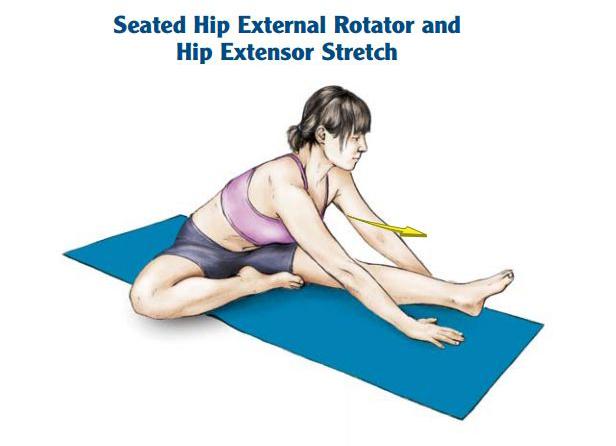
Finally, let’s wrap up the stretching session seated on the floor. Straighten your right leg by stretching it forward and slightly outward. Bend your left leg and place the sole of your foot on the inner part of your right thigh as close to your groin as possible. If you can, grab the toes of the right foot with your hands. If you can’t, place each hand on one side of the right leg as close to the right foot as possible.
In this position gently bend the upper body towards the right leg as much as you can. Just remember: don’t make any forceful, bouncing movements and don’t push for a lot of pain. You have to feel the stretch and a very mild pain. Your right knee should be touching the floor. If it’s impossible, sit on a towel to lift yourself up and help the stretch. Repeat with the other leg.
Glutes, hamstrings, calves, soleus…all the muscles of the back of the leg are being stretched and that concludes the routine. Time for a shower, a bite to eat and you’re good as new for your next ride.
